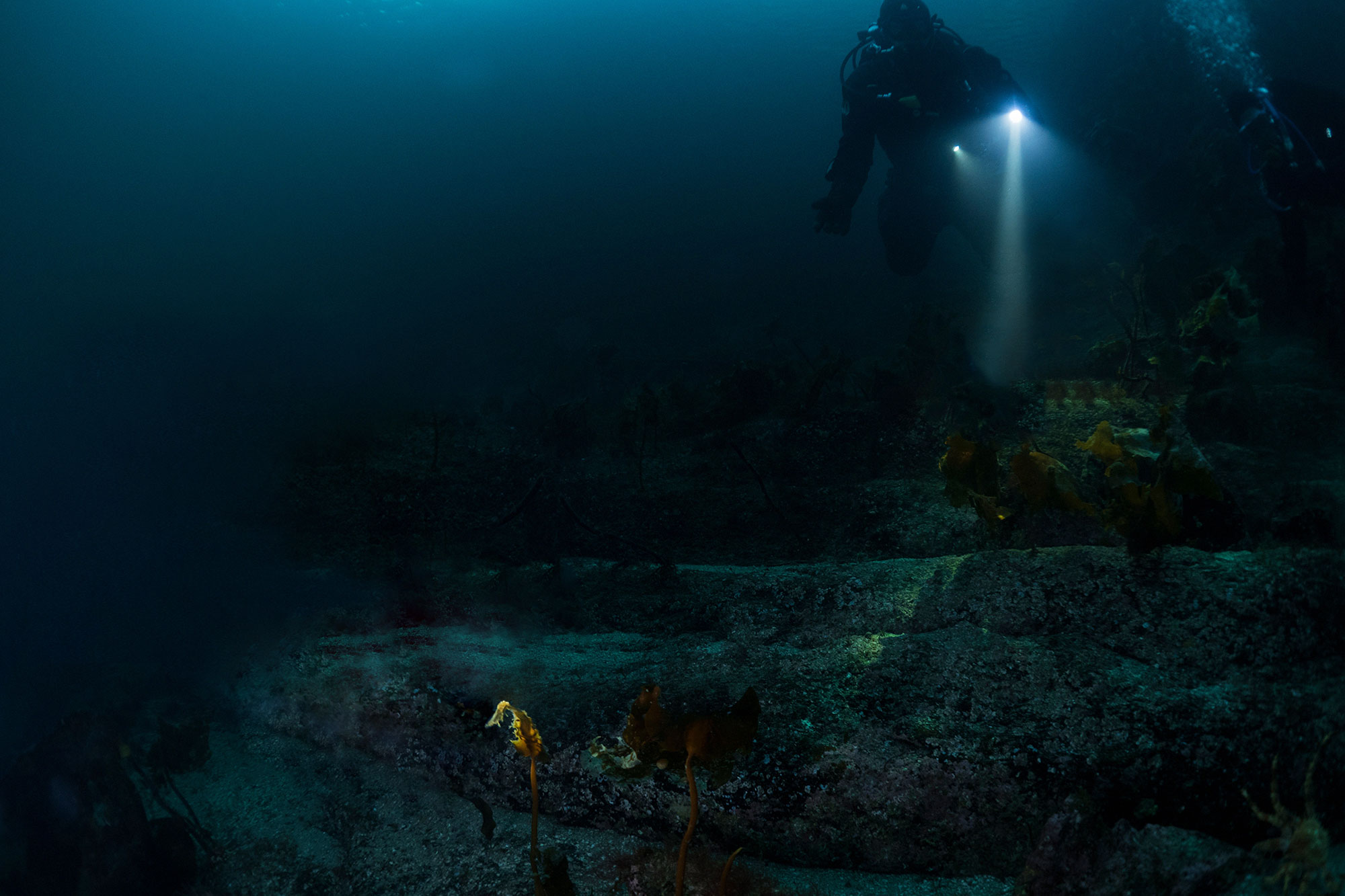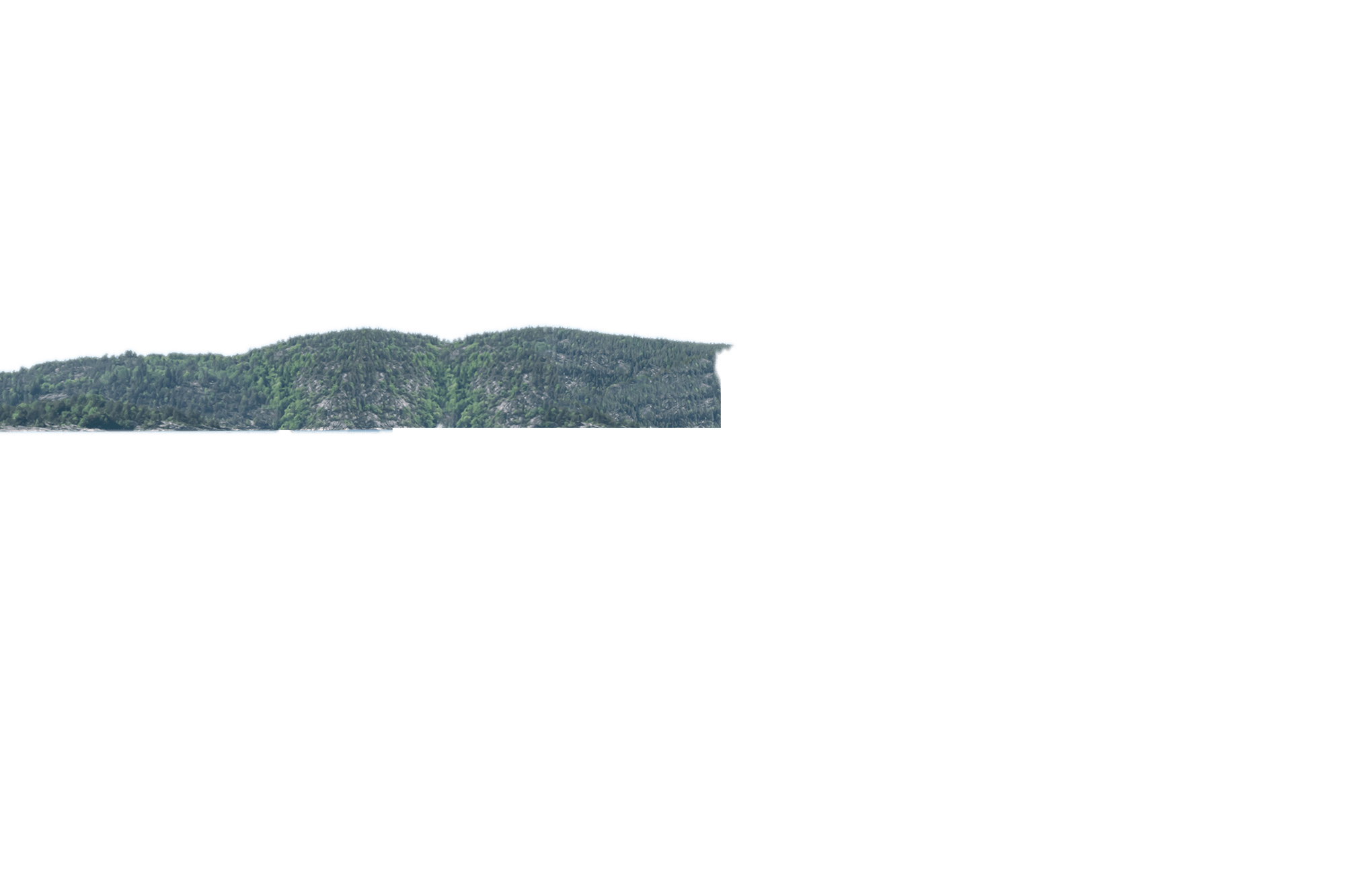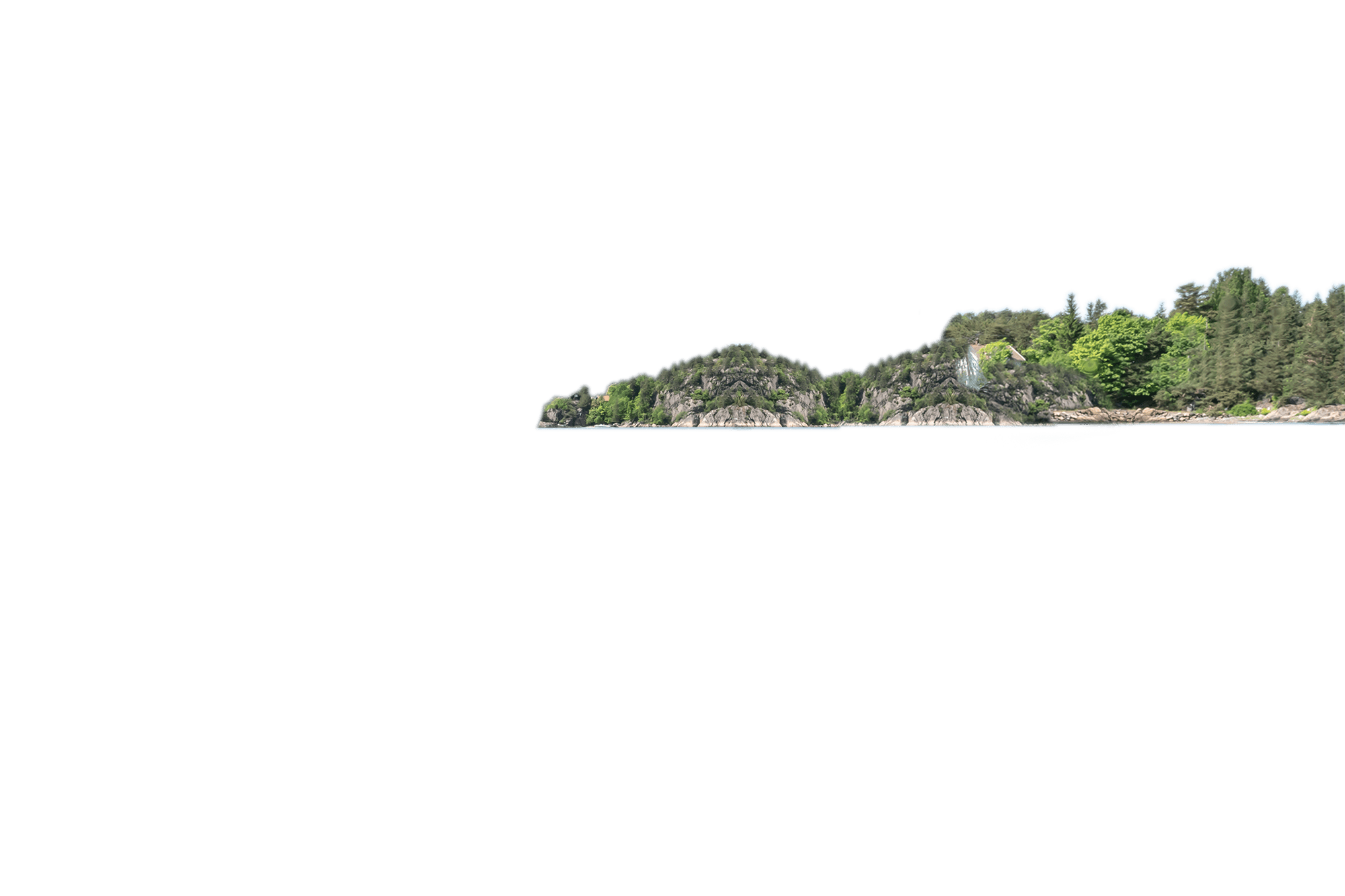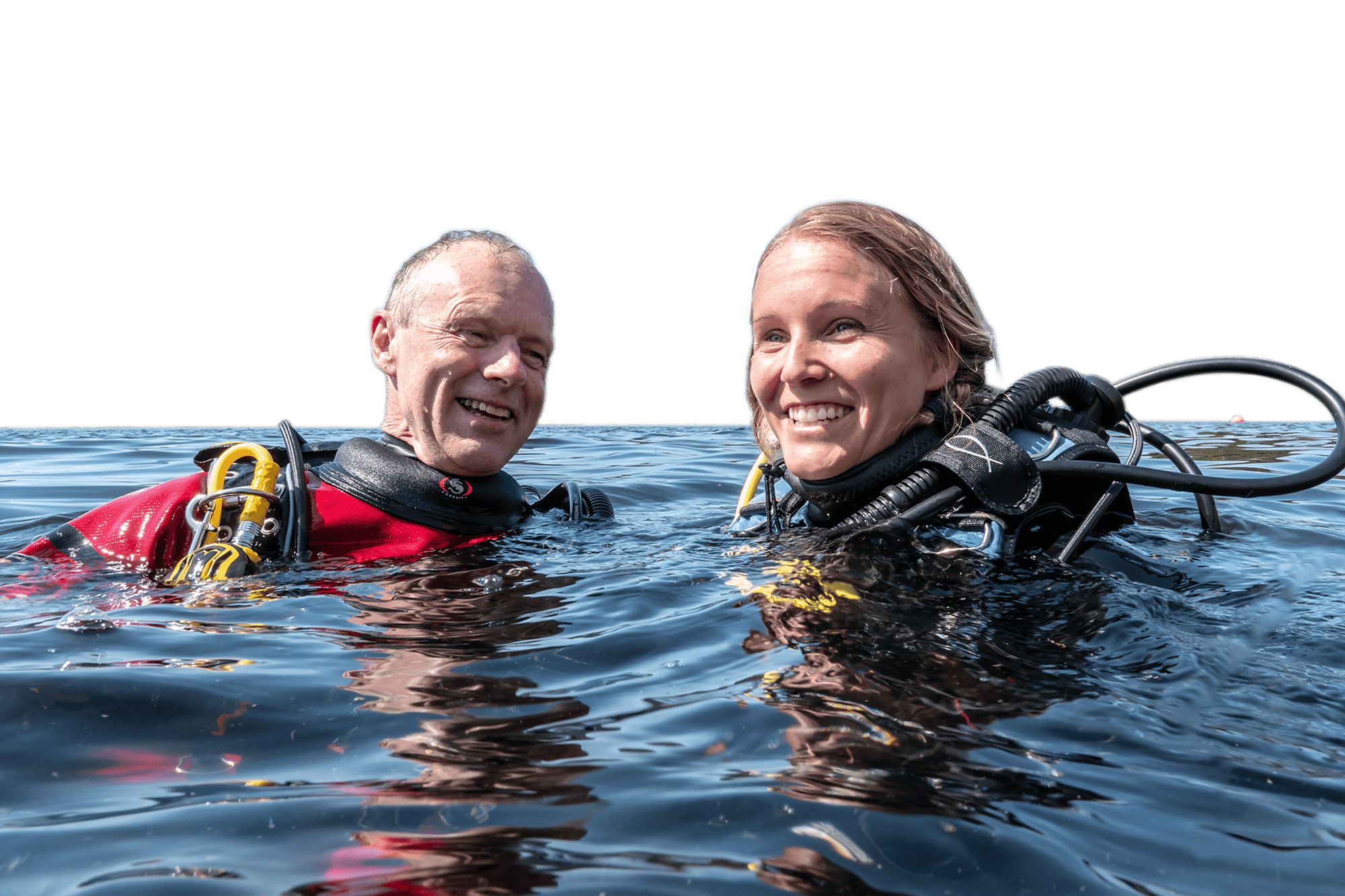N O R W A Y – N A S A o f t h e s e a




A n u n e x p l o r e d u n i v e r s e – a w h o l e u n d e r s e a w o r l d . T h e o p p o r t u n i t y o f t h e t i m e s
N o r w a y ' s s e a r e v e n u e s w i l l r i s e t o w a r d s 2 0 5 0 N e w s e a v e n t u r e s c a n r e s u l t i n 4 0 % r i s e i n v a l u e c r e a t i o m a t s e a .
W e a r e s t a n d i n g o n t h e t h r e s h o l d o f t h e c e n t u r y o f t h e s e a . W h e n w e g r a s p t h e o p p o r t u n i t y , w e s e e t h a t N o r w a y i s i n a u n i q u e p o s i t i o n – Sturla Henriksen




Part 1 The race for the sea
Diving. Special Advisor on ocean-related affairs at the UN Global Compact Sturla Henriksen and Blueye founder Christine Spiten share a passion for diving into the sea to gain an understanding of Norwegian ocean expertise and to see underwater drones in their true element. PHOTO: STEPHAN TSCHUDI MADSEN
Now the challenge begins to conquer the ocean deep. Norway is ready.
“Norway is among the world leaders. Even though we are a small country, we can compete with anyone in the marine sphere,” says Sturla Henriksen.
He is the former head of the Norwegian Shipowners' Association, one of the world’s largest of its kind. Now, he is Special Advisor to the United Nations Global Compact. His job is to ensure that the enormous growth expected in the maritime industries across the globe is sustainable. On his team, he has 10,000 companies and 4,000 organisations from 130 countries.
“We know more about the Moon’s surface than the bottom of the ocean. With larger research projects, we now retrieve samples of living organisms from more than 3,000 metres depth, half of which are unknown to science,” says Henriksen.
3,800 metres is the average depth of the oceans, which equals twelve times the height of the Eiffel Tower. The deepest recorded dive of any human reached a depth of 322 meters. Only three people have been in specially designed submarines at the deepest point of the oceans, the Mariana Trench of 11,034 metres.
Sky-high Norwegian ambition
The Americans and Russians are in a space race. But no one has taken the lead to conquer the depths of the ocean. New, big business opportunities are emerging for Norwegian enterprises as the ocean is identified as the solution to meeting the increasing needs of the world’s population for food, energy and transport.
Few, if any, other countries can match Norway’s ocean-related business, management and knowledge environments. Norway is home to a large number of world-leading companies in shipping, offshore industries, fisheries, aquaculture, maritime classification, shipyards, equipment deliveries, finance, brokerage, analysis and insurance. In addition, this coastal country has very strong and recognised marine research environments, including most marine researchers per capita.
Through generations, Norwegians have gained knowledge of the sea. About weather, wind and waves, about barometric and temperature, about communication and energy, and about ships, fish and big industry. Over and under the sea.
“Norwegian companies have developed technologies that make it possible to place floating wind turbines at sea, for instance. We are now also developing aquaculture facilities that can be located far out on the open sea. Some of these are the size of the Olympic Stadium in Beijing, The Bird’s Nest. All of this is achieved by technology we have developed in the oil industry,” says Sturla Henriksen.
It is when experience and knowledge from one industry, such as oil service, creates new solutions in another industry, such as the wind turbine or seafood industries, that Norway’s advantage become apparent. This is called industry diversification and ensures that established Norwegian companies develop new winners in the new, green economy.
Expects 40 percent growth
“Norway is a partner in 10 of the 15 marine projects funded by the EU’s Horizon 2020, the world’s largest research and innovation program. It shows that Norway is a close contender,” says Christina Abildgaard, Director of Marine Affairs at the Norwegian Research Council.
Knowledge and experience opens enormous commercial opportunities. In 2050, Norway’s annual sea-related revenues will be 40 percent above those of 2010, one of the peak years for Norwegian oil extraction, Sintef estimates. The global market is growing even more. The OECD estimates that the world will harvest five times as much from the sea in 2030 as today. The analysis is supported by, among others, the UN, the EU and the World Economic Forum.
“Norway has always enjoyed success in combining natural resources with knowledge. Hydropower, oil and gas, fisheries and aquaculture have shown the way. This tradition we can use to create the next sea industries,” says Vegar Johansen, Managing Director of Sintef Ocean.
The institution comprises some of the world’s leading marine laboratories.
“I am absolutely convinced that we are on the threshold of the century of the sea. It’s when we delve into what this really means, that we see that Norway is in a unique position,” says Sturla Henriksen.
Part 2 The astronauts
EXPLORERS OF OUR TIME. “What can underwater drones be used for? It’s harder to envision what they can’t be used for,” says Blueye entrepreneur Christine Spiten. PHOTO: STEPHAN TSCHUDI MADSEN
Blueye founders Erik Dyrkoren and Christine Spiten have a vision «To make the beauty of the oceans, and the dangers they face, visible for everyone – everywhere».
The Vikings, Leif Erikson and Arctic explorers Fridtjof Nansen and Roald Amundsen. For centuries, Norwegians have been the first to travel out and explore new areas all the way to the far corners of the globe. In recent decades, we have moved our quest for exploration into the depths. Norwegian pioneers have made discoveries and developed technology that allow Norway today to be home to some of the world’s leading ocean capacities. Now the next step is to make the ocean – also under water – accessible to all. Just as Elon Musk’s SpaceX venture develops spacecraft at a fraction of the price of those made by NASA, Norwegian companies are now working to make the ocean accessible to all. One of these pioneers is Blueye entrepreneur Erik Dyrkoren behind the development of an underwater drone. He believes this technology will change our interaction with the sea:
“We humans have a relationship with what is over the sea. What we can see. Blueye creates a link to what is below the sea surface. When people gain a relationship with life in the oceans, we see that they become conscious of taking care of marine life and plants,” says Dyrkoren.
The applications are also almost unlimited. Dyrkoren mentions hydropower, ports, search and rescue, bridge construction, offshore wind farms, tourism, research and education, plastics and seabed cleaning, and consumers as natural target audiences.
Part 3 The explorers
SHIP INSPECTION. Why wait for inspection of the hull until you are at port? Blueye expects to shorten the laying time for boats in port. PHOTO: BLUEYE
Deep down in the ocean there are creatures that can become new food for animals and humans.
Today, Norway has the world’s ninth-largest fishing industry. The amount of bio-marine sea resources harvested can be multiplied many times over in the near future. Much of the ocean is still unknown to science.
Norway can produce 20 million tonnes of seaweed and kelp worth 40 billion NOK by 2050.
“Norway has very special advantages. We can multiply the volume if we harvest other resources further down the food chain. This concerns animal and plant plankton as well as mesopelagic fish,” explains Vegar Johansen, Managing Director of Sintef Ocean.
Mesopelagic fish live at depths of between 200 and 1,000 metres. When we ask about the names of the fish species that Sintef sends us images of, researchers are not sure if they have all been named yet.
In recent years, the harvesting of such marine resources has given us, among other things, Omega 3 from krill. The next success could be Calanus oil, extracted from Norway’s largest marine resource, the Calanus finmarchicus copepod.

“Norway has succeeded in developing several highly nutritious products that can be used for food. We will see more of this when exploring larger parts of the sea,” Research Director at Sintef, Hanne Digre, assures us.
“We expect that we will be able to harvest twice as much Calanus compared to the volume of all fish species in the Norwegian zone. This is a new raw material that we are only beginning to exploit,” says Johansen.
He sees increased utilisation of these raw materials as crucial for the aquaculture industry to grow further. Today, fodder for farmed fish is drawn from land-based produce such as soy, which is largely imported, mixed with marine produce. The greatest scarcity regards sources of Omega 3, which can also be extracted from krill and Calanus.
“We see that we need an increase in other nutritional sources to meet humanity’s increased food needs, and to achieve the growth in aquaculture we wish for,” says Johansen.
However, he doesn’t expect you to be served Calanus soup at fine restaurants anytime soon. For human consumption, he places greater faith in the industrial development of seaweed and kelp.
“Kelp is the world’s largest farmed species. It is unbelievably far greater than fish farming,” says Johansen.
Several places in Norway are currently testing such aquaculture ventures. Estimates show that Norway can produce 20 million tonnes of seaweed and kelp at a value of NOK 40 billion by 2050.
Part 4 Tresure hunt at sea
PHOTO: NTNU / MarMine
Only five percent of the seabed has been explored.
We have now dived into depths of the seas where sunlight barely reaches. Only a few people have dived beyond 1,000 metres.
Here, there are minerals such as gold, silver, copper, zinc, manganese, iron, nickel and cobalt. Today, such minerals are used in everything from mobile phones and computers to wind turbines, electric cars and other electronics.
The resources are vast. Indeed, so great that NTNU has launched a pilot program for underwater mining, which is headed by Associate Professor Steinar Løve Ellefmo at NTNU. His job is to assess the potential of mineral deposits in the Norwegian waters.
“Down on the seabed you find ‘smoking chimneys’. They reveal the mineral deposits, and the ‘smoke’ consists of hot mineral-rich water. When the water finds a channel and forms a ‘chimney’, we know that there are minerals at the bottom,” explains Ellefmo.
Due to the pressure, the water temperature can reach 400 degrees centigrade. He envisions a future where this heat can be used to drive the extraction of the minerals. Norwegian companies and workers today deliver control systems, crane systems, engines and propeller systems for the new machines that can operate underwater.
MINERAL HUNT Nautilus Minerals aims to extract minerals from the seabed as early as in 2018. The Kongsberg Group, Rolls Royce Maritime in Ålesund and MacGregor Norway are among the suppliers of a new generation of mining equipment. PHOTO: NAUTILUS MINERALS
The first extraction is expected to start in 2019. Nautilus Minerals is ready to start mining in the southeast Pacific north of Papa New Guinea. Exploration licenses have also been issued for the Indian Ocean and the Pacific. In the Pacific, the license is primarily for exploiting manganese nodules, something we do not have in Norwegian waters,” according to Ellefmo.
He is also concerned with the need for utilising our biological skills to manage the interaction between wildlife and extraction. Vegard Johansen of Sintef Ocean shares the same concerns. But he wants to curb the fear of conflict between aquaculture and mining.
“We know that the volume of bio-marine resources is much lower on depths suitable for mining than higher up in the ocean. In shallow waters, we need to give extra thought to this issue. At deeper depths, we expect limited potential for industrial development. But mining at sea is so new that we do not know how to handle it with minimal environmental impact,” Johansen says.
The next wave
Oil activity is decreasing on the Norwegian continental shelf, but the sea remains our main arena. According to OECD and Sintef, Norwegian seafood is to grow eightfold, and new opportunities are developing within medicine, energy and industry.
It is the government’s stated goal that Norway is to become best at sea. Internationally, it is not only agreed that the sea is the solution to major global challenges – they often also look to Norway for solutions. With one of the world’s longest coastlines and historical spearheading expertise within energy, seafood and shipping, there are great expectations for how Norway can take a leading role in the growth to come. So, how do we ride this new wave?